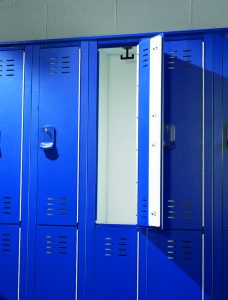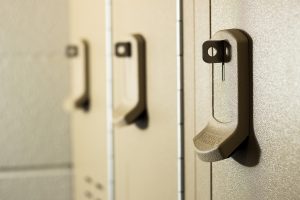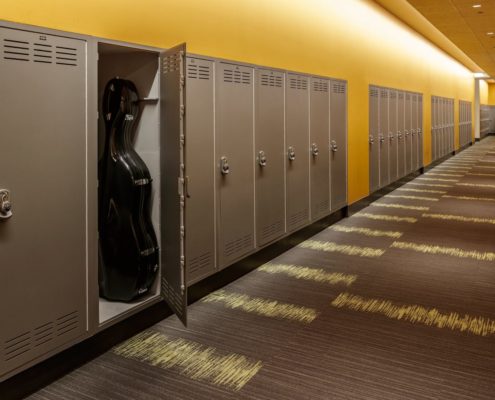When it’s time to replace the lockers in your school, you’ve got a lot of options to consider. You may be thinking of using the same type of lockers, but you should really know how they stand up to the other materials that are available. You’ll want to choose a material that will be durable, long-lasting, and low maintenance. There are a few options to think about before making the decision.
 The Types of Lockers
The Types of Lockers
Lockers can be made from a variety of materials, but they’re mostly found as metal, plastic, and even wood. However, there are different types of plastic that can be used for lockers. Each material has their distinct advantages, but some are better than others.
- Steel lockers are the traditional go-to for schools. They’re easily painted, strong, and reliable. However, there are a few downfalls with this material because they can easily rust and get dented.
- Wood has been a trusted material for building since the dawn of the human species. Wood looks great, feels good, and provides a secure compartment. Still, wood isn’t impervious to water and other factors.
- Laminate lockers are highly durable. They feature a wooden interior with a plastic laminate exterior. Unfortunately, the laminate exterior can peel off, leaving the wood exposed.
- Phenolic plastic is strong, reliable, and easily customizable to fit any design pattern or décor. Its interior features a kraft paper core.
- High-density polyethylene is a solid plastic made from recycled material and provides a strong and solid structure.
How These Materials Rank
While all of the previously listed materials are great for lockers, there are a few factors that may sway your decision. Let’s see how these materials rank in a few important categories.
Durability
Lockers are meant to be durable, considering that they’re meant to hold and protect belongings. While most of these materials are durable, there are a few that don’t hold up to the rest. Most notably, wood lockers can lose their durability when they become waterlogged. Steel lockers can actually dent when slammed or pushed hard enough. Laminate, Phenolic, and HDPE plastic are the most durable lockers in this bunch.
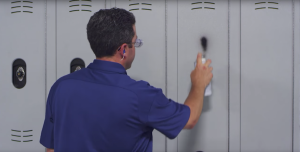 Longevity
Longevity
When you choose your lockers, you’ll definitely want to pick a long-lasting material. Out of all these choices, HDPE plastic offers the most longevity since it’s warranted for 25 years. Phenolic plastic can absorb moisture and sprout mold. Laminate can peel and its core can be chipped. Steel lockers can rust, requiring some considerable maintenance.
Cost-Effective Maintenance
Another major factor to consider is low-cost maintenance. Steel lockers tend to need fresh coats of paint throughout their lifespan. When the kraft paper core of Phenolic plastic absorbs moisture and grows mold, they usually need to be replaced. Laminate lockers can lose their protective coating, leaving their wooden interior exposed to the elements. HDPE plastic, on the other hand, can stand up to humidity and moisture, doesn’t require repainting, and its hinges remain intact over the years.
Now that you’re familiar with how these locker materials rank, you’ll know which ones would be right for your school. Want to learn more about how to go about choosing your school’s lockers? Check out this eBook, How to Choose Lockers for Your School, from your friends at Scranton Products.

 Creating a Safe Learning Environment
Creating a Safe Learning Environment When you walk down the halls and see instances of vandalism, it’s never fun, especially when there’s graffiti all over the walls and lockers. You can
When you walk down the halls and see instances of vandalism, it’s never fun, especially when there’s graffiti all over the walls and lockers. You can 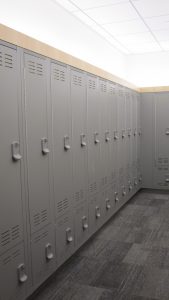 When you notice the unsightly dents, you’ll want to fix them before they get worse. Take a rubber mallet, or a flat hammer, and with medium force, strike the dent. You should have a hard flat surface behind the opposite direction of the dent to ensure that the dent evens out. Using light to medium force, strike the dent a few times. It’ll start to flatten out and become more even with the locker’s surface. You’ll want to complete this action after school hours due to the loud noise that’s expected when hammering the locker—you won’t want student distraction to be an issue.
When you notice the unsightly dents, you’ll want to fix them before they get worse. Take a rubber mallet, or a flat hammer, and with medium force, strike the dent. You should have a hard flat surface behind the opposite direction of the dent to ensure that the dent evens out. Using light to medium force, strike the dent a few times. It’ll start to flatten out and become more even with the locker’s surface. You’ll want to complete this action after school hours due to the loud noise that’s expected when hammering the locker—you won’t want student distraction to be an issue.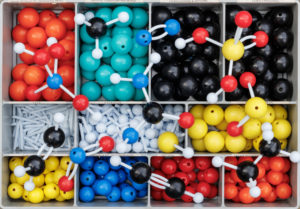 You may not really take the time to consider the variety of materials that can be used as toilet partitions. However, reviewing all of your options can allow you to make the best choice for your facility. Most toilet partitions are made from plastic with an inner core made from kraft paper or cardboard. Materials like Phenolic, Baked Enamel, and Plastic Laminate may look nice in your restroom, but they may be left vulnerable to the moisture and humidity in your restroom. The inner core will absorb the moisture, and over time, it’ll sprout mold, leading to a pungent odor and a substantial problem to solve.
You may not really take the time to consider the variety of materials that can be used as toilet partitions. However, reviewing all of your options can allow you to make the best choice for your facility. Most toilet partitions are made from plastic with an inner core made from kraft paper or cardboard. Materials like Phenolic, Baked Enamel, and Plastic Laminate may look nice in your restroom, but they may be left vulnerable to the moisture and humidity in your restroom. The inner core will absorb the moisture, and over time, it’ll sprout mold, leading to a pungent odor and a substantial problem to solve. A Material That Lasts
A Material That Lasts



